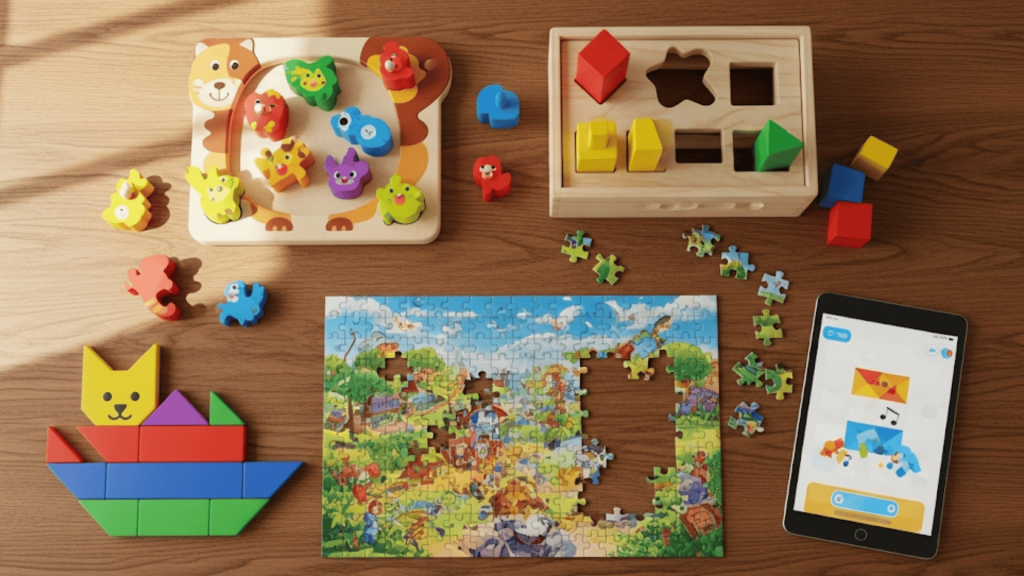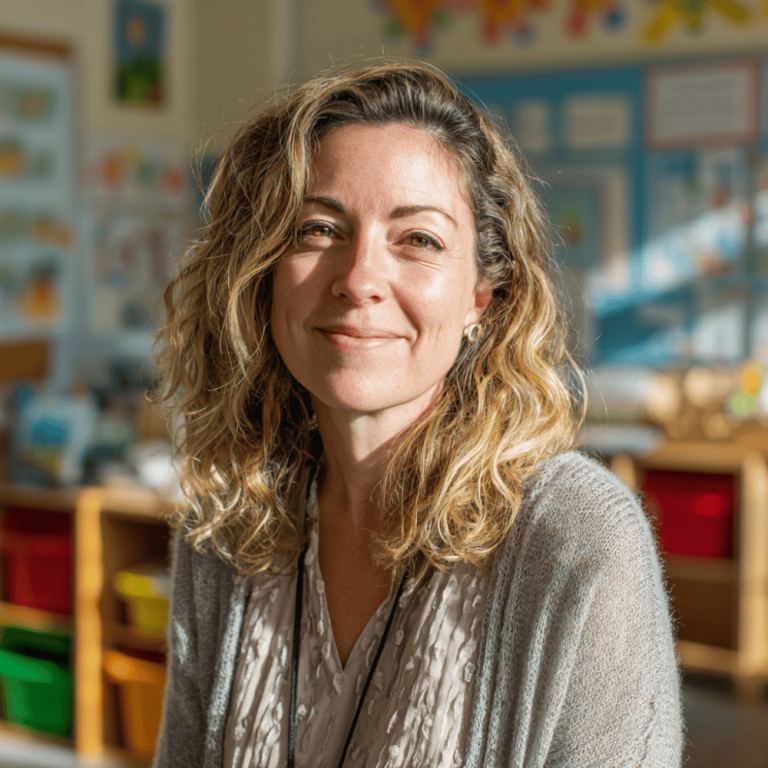When you hand a child a puzzle, you’re not just giving them something to pass the time; you’re opening a door to learning.
I’ve seen how puzzles spark curiosity, build focus, and teach problem-solving in ways that feel like play. In this guide, we’ll go through the various types of puzzles for kids, ranging from chunky toddler pieces to intricate 3D models suitable for preteens.
You’ll also find age-based recommendations, tips for choosing the right puzzle, ways to encourage puzzle play, and the best brands worth trying.
By the end, you’ll see how puzzles can grow with your child and turn simple playtime into lasting skills.
Why Puzzles Matter in Childhood Development
Puzzles do more than keep kids busy. They give the brain and body a workout in fun ways. When children sit down with a puzzle, they’re practicing skills that will help them in school and everyday life.
- Brain growth and problem-solving: Children learn how to think critically through problems, test solutions, and identify patterns. This builds memory, focus, and critical thinking.
- Fine motor skills and coordination: Picking up pieces, turning them, and fitting them together improves hand strength and control. It also sharpens hand-eye coordination.
- Emotional growth: Finishing a puzzle teaches patience and persistence. Every small success boosts confidence and helps kids feel proud of their effort.
Puzzles may look simple, but they lay the foundation for learning, creativity, and resilience.
Types of Puzzles for Toddlers & Children
There are many types of puzzles for kids, each helping with different skills. Some focus on problem-solving, while others build memory, creativity, or language. Below is a quick look at the main kinds.
1. Jigsaw Puzzles
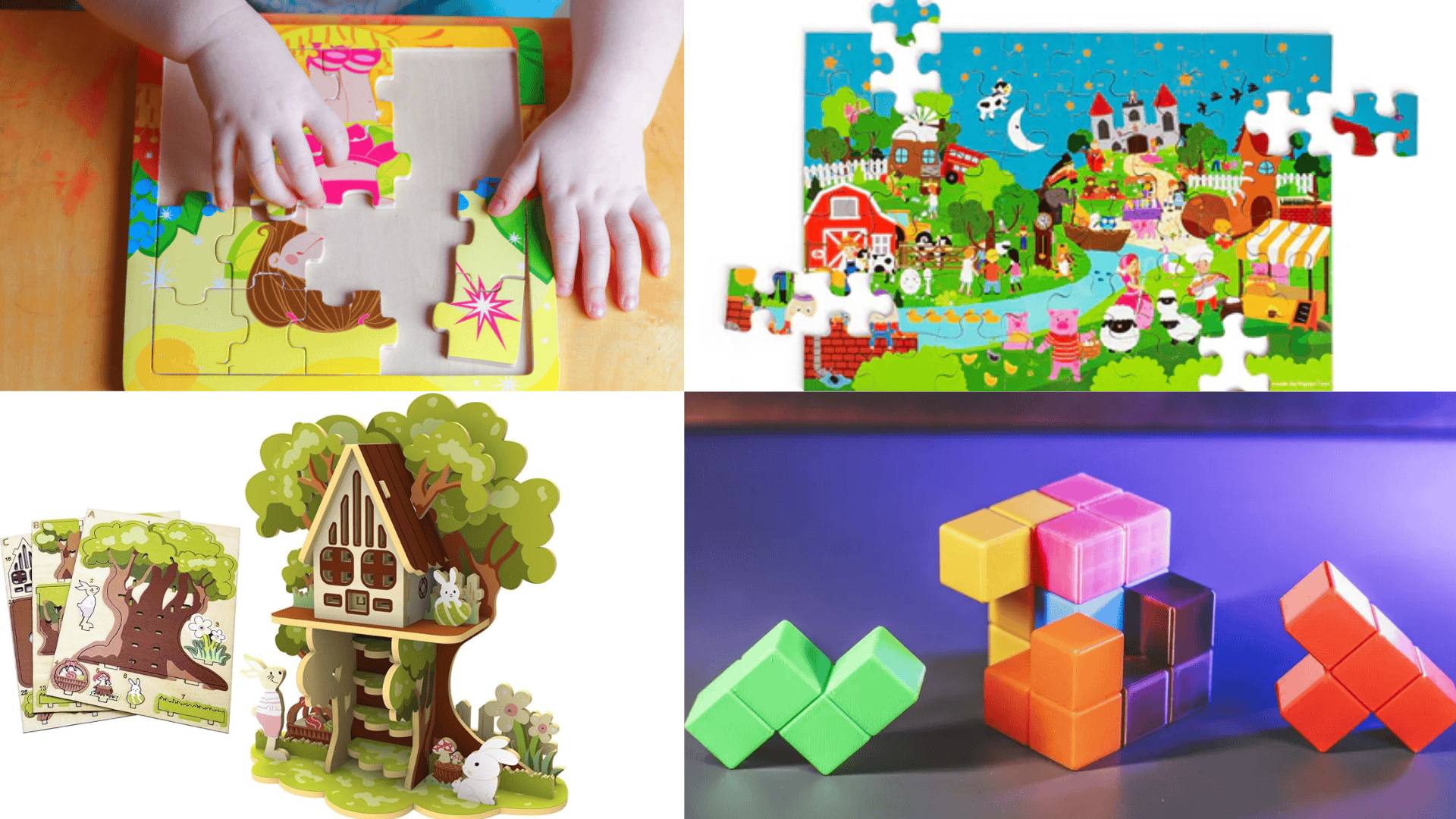
Jigsaw puzzles are the most common and come in different formats. They help kids develop patience, memory, and attention to detail:
- Frame Puzzles: These have fixed borders that guide children as they fit pieces inside. They are best for beginners learning how puzzles work.
- Floor Puzzles: Large, sturdy pieces spread out on the floor, making them easy for young kids to see and handle. They build coordination and teamwork.
- 3D Puzzles: These create models such as buildings or animals. They develop spatial skills and patience by requiring step-by-step construction.
- Cube Puzzles: Rotating cube puzzles challenge kids to match colors or patterns. They encourage logical thinking and problem-solving.
2. Insert Puzzles
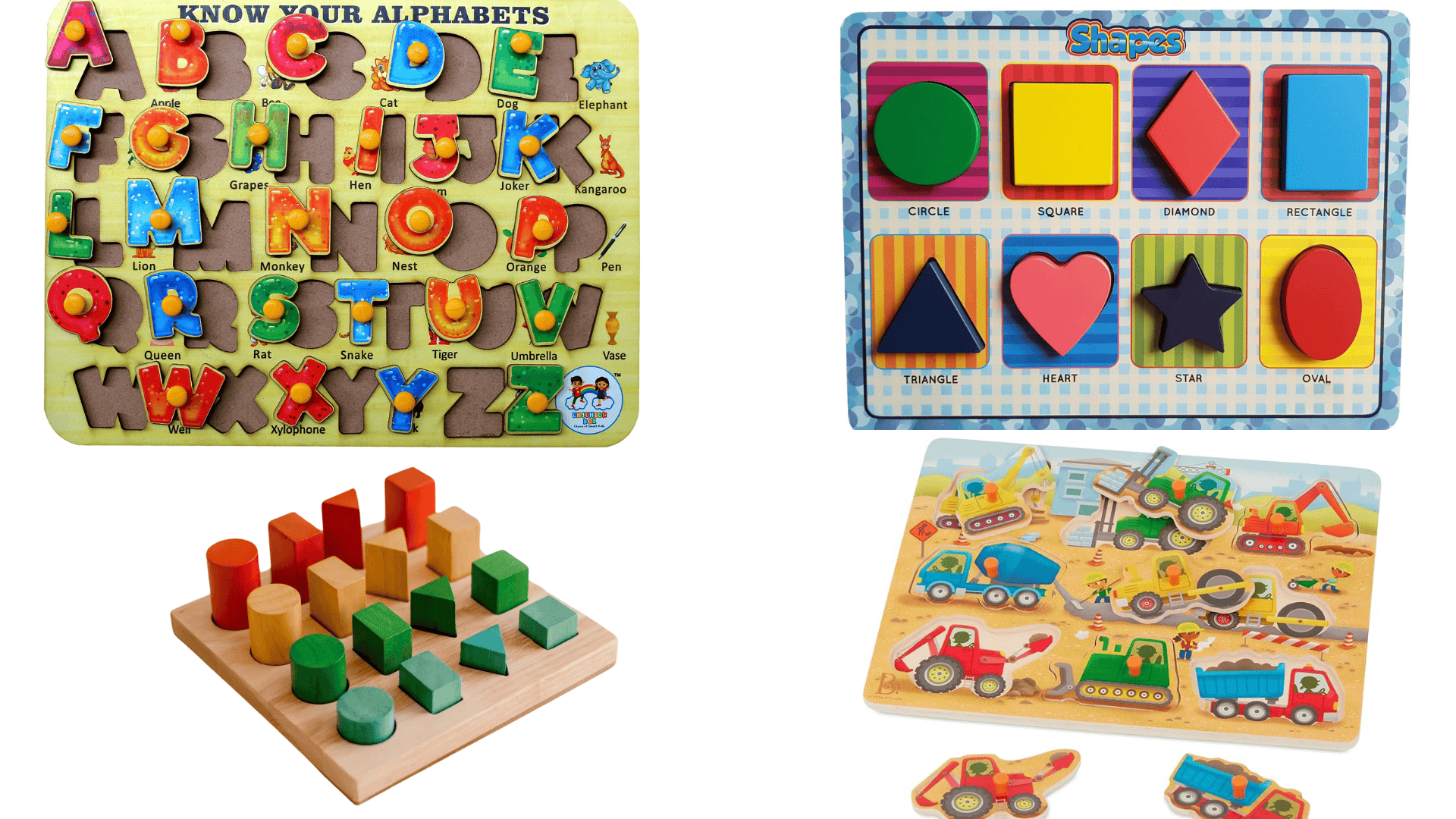
Insert puzzles are made for toddlers. They are simple, sturdy, and help with hand control and recognition:
- Knob Puzzles: Pieces with small knobs help toddlers lift and place shapes with ease. They improve grip strength and hand control.
- Chunky Puzzles: Thick, sturdy pieces sit on top of the board. They are easy for toddlers to hold and match to pictures.
- Peg Puzzles: These require precision to place pieces on small pegs. They sharpen hand-eye coordination and fine motor skills.
- Shape Sorters: Sorting shapes into matching slots teaches recognition and early problem-solving. They also support early math concepts.
3. Word & Logic Puzzles
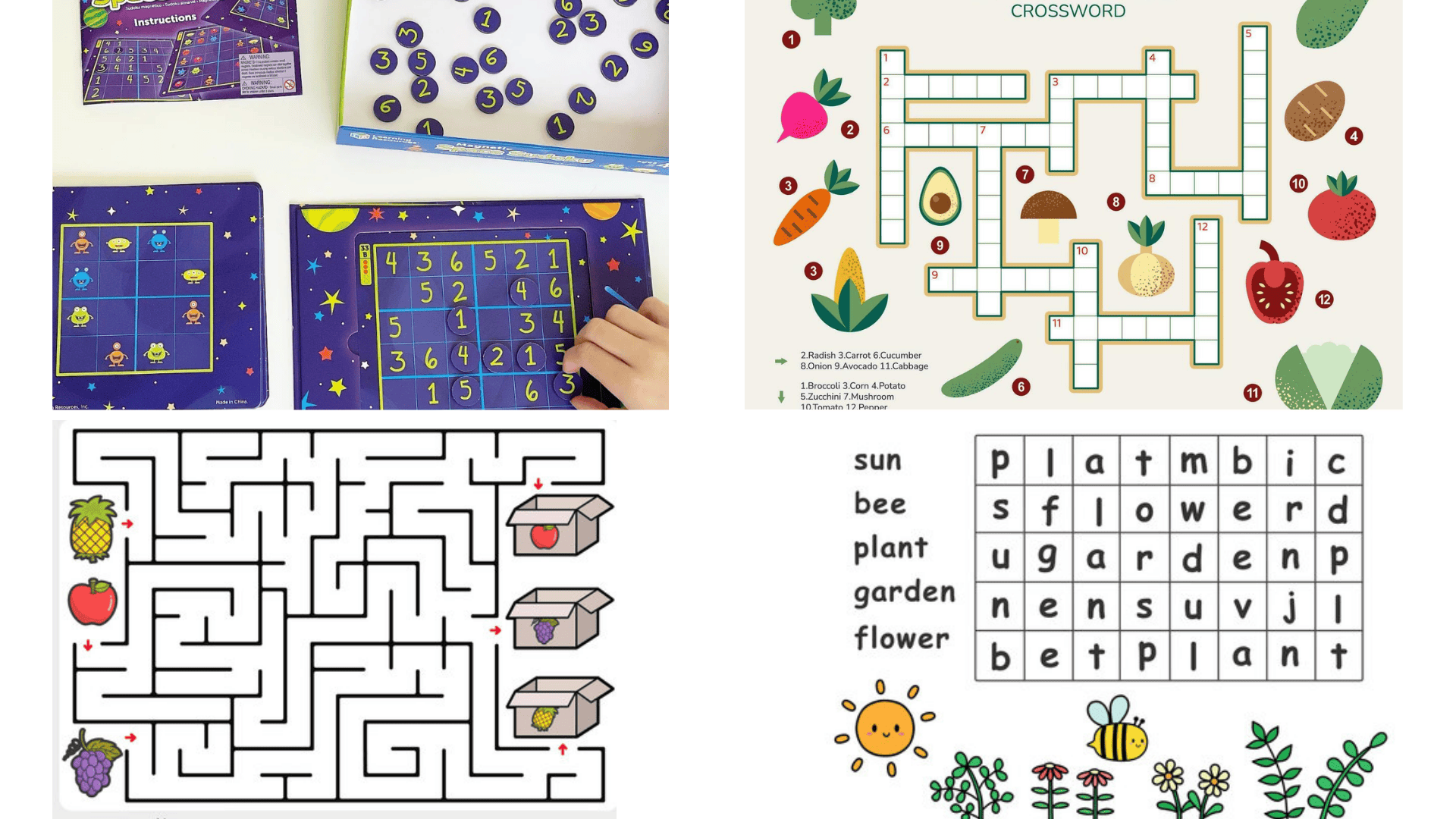
These puzzles mix fun with thinking. They are best for school-age children, building reading and reasoning skills:
- Sudoku: Simplified Sudoku uses smaller grids with numbers or pictures. It teaches sequencing and number sense.
- Crosswords: Kid-friendly crosswords focus on basic words and themes. They support vocabulary growth and spelling.
- Mazes: Children trace paths to reach an endpoint. Mazes improve planning and patience.
- Word Searches: These ask kids to find words hidden in grids. They train attention to detail and spelling accuracy.
4. Educational Puzzles
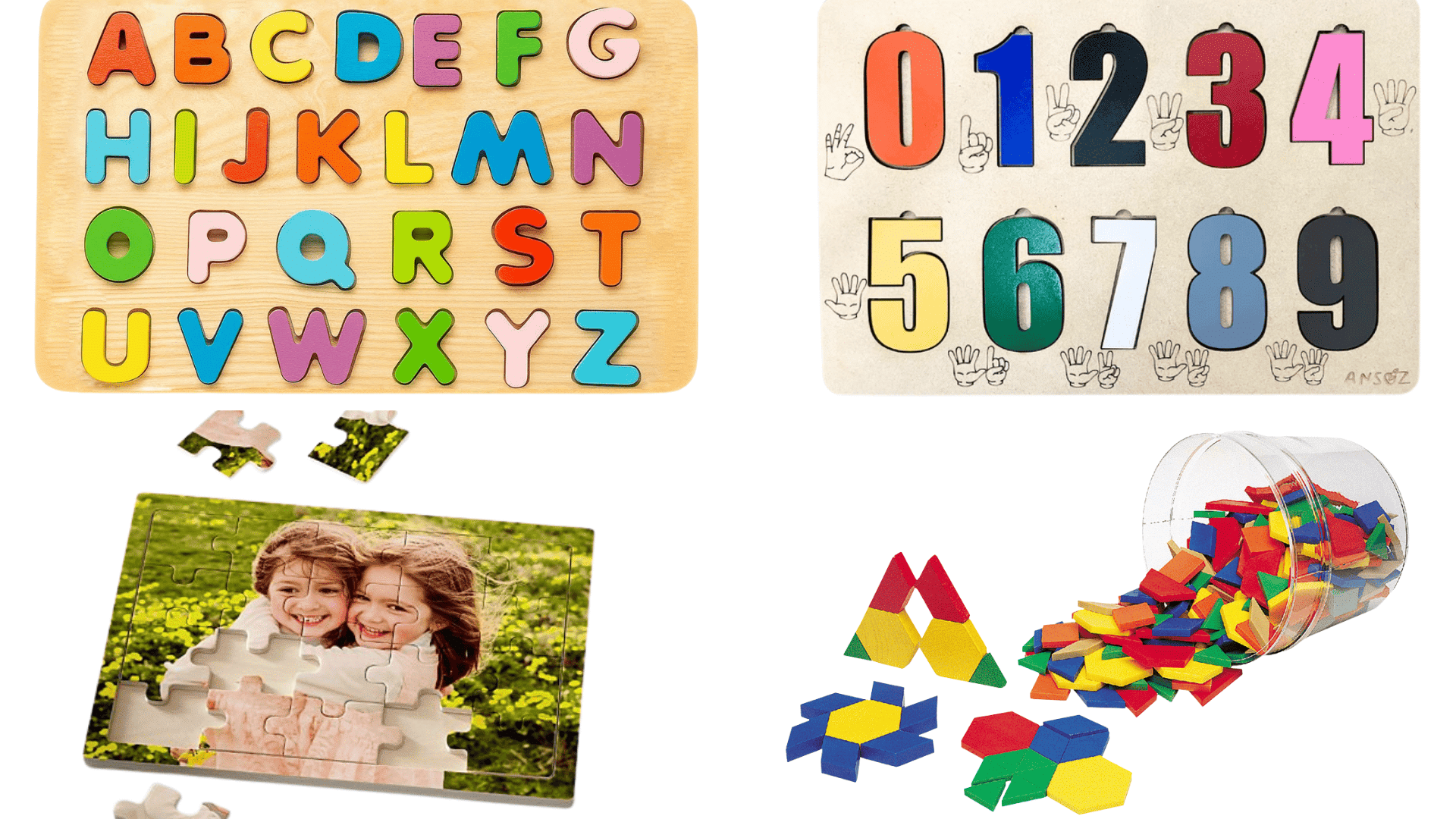
Educational puzzles combine learning with play. They support early math, reading, and recognition:
- Alphabet Puzzles: Letters fit into matching slots or form words. They build early reading readiness and letter recognition.
- Number Puzzles: Counting puzzles teach numbers, sequences, and simple math skills. They make arithmetic visual and hands-on.
- Picture Puzzles: Children match images to complete scenes. They build memory, recognition, and focus.
- Pattern Blocks: Geometric shapes are arranged into designs. They teach sequencing, symmetry, and spatial skills.
5. Creative & Cultural Puzzles
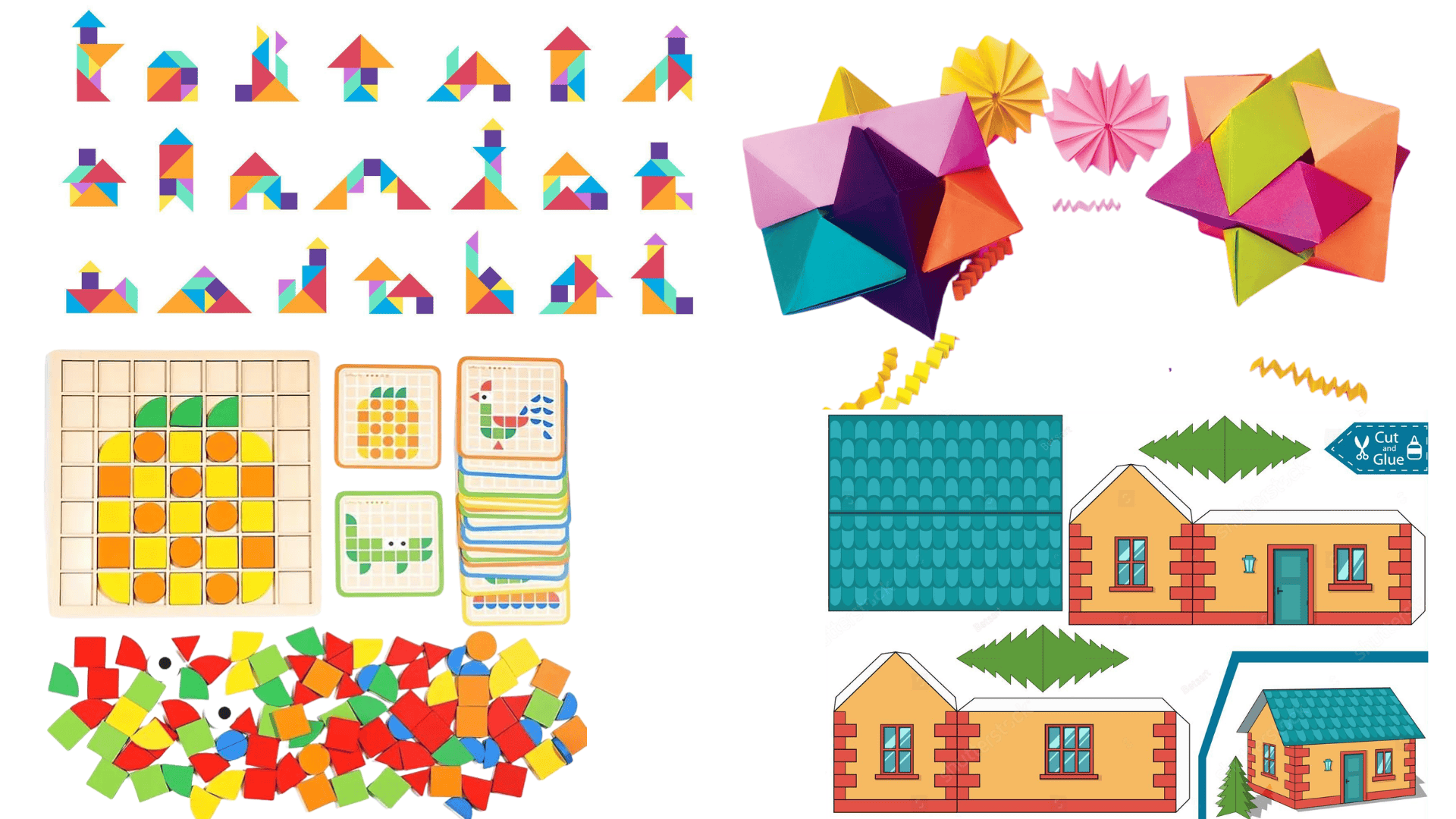
These puzzles inspire imagination and teach patience. They often connect to art, design, or traditions;
- Tangrams: Seven flat shapes are arranged to form animals, people, or objects. They improve geometry skills and spatial awareness.
- Origami Puzzles: Step-by-step folding puzzles create shapes or animals. They build patience and precision.
- Mosaic Puzzles: Kids place tiles or pieces to make pictures. They strengthen creativity and color recognition.
- DIY or Printable Puzzles: Printable mazes or cut-out puzzles let kids design and solve their own. They support creativity and problem-solving.
6. Digital & Interactive Puzzles
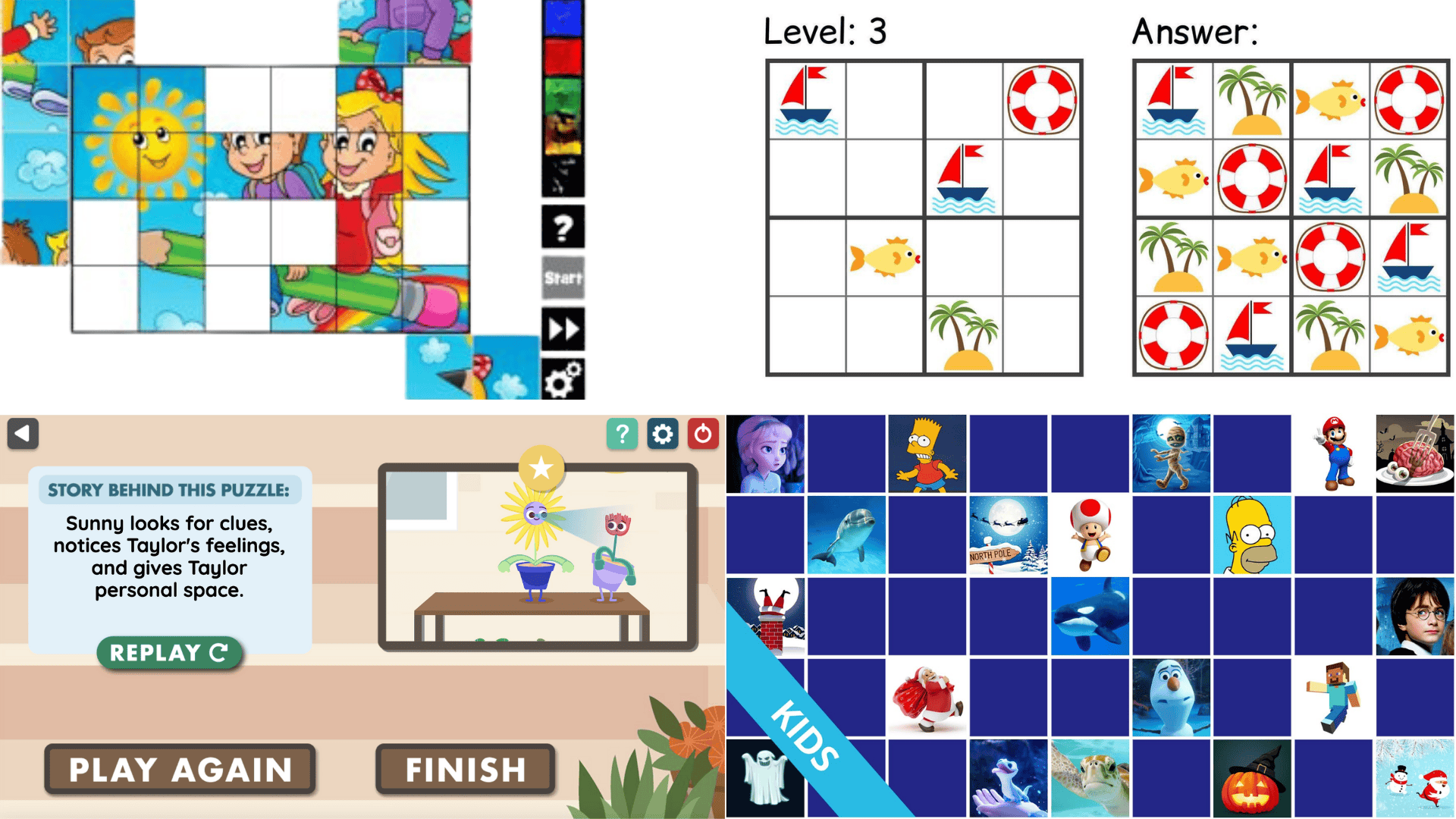
Digital puzzles bring learning to screens. They should be balanced with hands-on play for the best results:
- Digital Jigsaws: Virtual jigsaws simulate physical puzzles on a screen. They adjust the difficulty level for different age groups.
- Logic Games: Apps with sequence or pattern challenges build reasoning and strategy. They are suited for older kids.
- Interactive Story Puzzles: Stories include puzzles at different stages, blending reading with problem-solving. They keep kids engaged through play.
- Matching Games: Digital matching puzzles train memory and focus. They use pictures, numbers, or sounds to build recognition skills.
Each type of puzzle introduces children to different ways of thinking and solving problems. Mixing categories gives kids a balance of fun and learning.
Puzzle Recommendations by Age Group
Each age group has different needs. The right puzzle should match your child’s skills and safety level. Here are age-based recommendations:
| Age Group | Puzzle Type | Benefits |
|---|---|---|
| Toddlers (1–3 Years) | Chunky wooden puzzles, Knob puzzles, Shape sorters | Safe and sturdy; teach shape and color recognition; improve hand control and coordination; build confidence. |
| Preschoolers (3–5 Years) | Jigsaw puzzles (4–12 pieces), Color-matching, Animal & Alphabet puzzles |
Introduce letters, animals, and patterns to strengthen memory, language skills, and focus, while encouraging persistence. |
| Early Elementary (5–7 Years) | Jigsaw puzzles (24–100 pieces), Word (crosswords, word searches) & Math puzzles (number sequencing, counting) |
Develop reading and problem-solving skills; practice basic math; encourage logical thinking and accomplishment. |
| Older Kids (7–10 Years) | Jigsaw puzzles (100–300 pieces) Logic & brain teasers, Crosswords & Sudoku for kids |
Build patience and focus; strengthen reasoning and memory; encourage persistence through challenge. |
| Preteens (10–12 Years) | 3D puzzles (buildings, models) Escape room, Mystery, Advanced logic puzzles & Riddles |
Encourage planning, creativity, and independent problem-solving, while supporting teamwork in group activities. |
Puzzles grow right along with your child, from chunky wooden pieces to detailed 3D builds. The right puzzle keeps play fun while building focus, confidence, and problem-solving skills.
It’s a simple way to learn and laugh at the same time.
Choosing the Right Puzzle for Your Child
Selecting the right puzzle can make a significant difference. The goal is to keep it safe, fun, and challenging without being overwhelming. Some of the points to keep in mind are given below:
- Consider age and safety: For younger kids, puzzles should be sturdy with large pieces that are easy to grasp and safe from choking hazards. As children grow older, they can handle puzzles with smaller, more detailed pieces that demand more precision.
- Balance fun and challenge: A puzzle that feels too easy quickly loses their attention, while one that’s too difficult may cause frustration. The best choice is a puzzle that challenges your child just enough to stay fun and rewarding.
- Observe your child’s interests: Children tend to engage more with puzzles that reflect their existing interests. Themes like animals, vehicles, numbers, or favorite stories make puzzles exciting and encourage kids to keep solving them.
- Increase difficulty gradually: Begin with simple puzzles that are easy to complete, and then gradually introduce more complex designs. This step-by-step increase builds your child’s confidence and keeps them motivated to take on bigger challenges.
The right puzzle grows with your child’s skills. Matching safety, interests, and challenge helps turn puzzle time into a rewarding habit.
Tips for Parents to Encourage Puzzle Play
Puzzles work best when parents play an active role in their children’s learning. A little guidance and encouragement can make puzzle time more engaging and rewarding for kids. A few tips are listed below:
- Make it part of daily playtime: Add puzzles into your child’s routine, even for just a few minutes. Regular play helps build focus and maintain consistent learning.
- Solve puzzles together for bonding: Working side by side shows kids they’re supported. It also creates moments of connection while you celebrate progress together.
- Celebrate small wins to build confidence: Acknowledge every piece placed or puzzle finished. Small celebrations encourage persistence and boost your child’s confidence.
- Rotate puzzles to keep things fresh: Switch between different puzzles often. New themes and challenges prevent boredom and keep puzzle play exciting.
Encouragement, variety, and shared play make puzzles both fun and educational. With simple support, puzzle time can become a habit that kids look forward to.
Best Puzzle Brands & Recommendations
Finding the right puzzle brand helps parents strike a balance between cost and durability.
Ravensburger offers precise cuts, thick boards, and strong printing, making their puzzles long-lasting. They are priced mid to premium.
Melissa & Dougis known for wooden and floor puzzles for toddlers and preschoolers. They are budget to mid-range and widely available, though quality can vary, with some reports of missing pieces.
Schmidt Spieleproduces clean-cut, high-quality puzzles, often featuring landscapes and animals. They are mid-range in price and use eco-friendly boards.
Brands like Peaceable Kingdom, eeBoo, and Coop focus on cooperative and educational play, offering low to mid-range prices and sturdy designs, although durability varies across products.
Parents should check age guidelines, piece quality, and replacement policies before making a purchase. For toddlers, sturdiness and safety are more important than complexity, while older kids may benefit from more detailed or challenging designs.
Product Picks at a Glance:
- Ravensburger “My First Floor Puzzle”: a great starter with large pieces for toddlers.
- Melissa & Doug Underwater Ocean Floor Puzzle: colorful, sturdy, and ideal for group play.
- Melissa & Doug Alphabet Chunky Puzzle: Helps preschoolers develop their letter recognition and motor skills.
- Ravensburger 3D Globe Puzzle: perfect for older kids who enjoy model-style challenges.
Good puzzle brands offer more than just fun; they provide safe, durable tools for learning. Choosing the right brand means puzzles that last longer, keep kids engaged, and give better value over time.
Conclusion
We’ve seen how different types of puzzles for kids can do much more than pass the time. From chunky wooden pieces for toddlers to 3D builds for preteens, puzzles grow right alongside your child.
They strengthen problem-solving, boost memory, improve motor skills, and even build patience and confidence. As parents, we can make puzzle play a part of our daily lives, choose the right brands, and celebrate every small win.
I believe puzzles are simple tools with powerful results. Now it’s your turn; pick a puzzle that matches your child’s age and interests, and watch them learn, grow, and enjoy every piece of the challenge.
Also, comment down your kids’ favourite puzzles that keep them engaged and enhance their learning!


